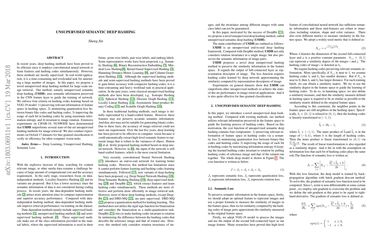Unsupervised Semantic Deep Hashing
In recent years, deep hashing methods have been proved to be efficient since it employs convolutional neural network to learn features and hashing codes simultaneously. However, these methods are mostly supervised. In real-world application, it is a time-consuming and overloaded task for annotating a large number of images. In this paper, we propose a novel unsupervised deep hashing method for large-scale image retrieval. Our method, namely unsupervised semantic deep hashing (\textbf{USDH}), uses semantic information preserved in the CNN feature layer to guide the training of network. We enforce four criteria on hashing codes learning based on VGG-19 model: 1) preserving relevant information of feature space in hashing space; 2) minimizing quantization loss between binary-like codes and hashing codes; 3) improving the usage of each bit in hashing codes by using maximum information entropy, and 4) invariant to image rotation. Extensive experiments on CIFAR-10, NUSWIDE have demonstrated that \textbf{USDH} outperforms several state-of-the-art unsupervised hashing methods for image retrieval. We also conduct experiments on Oxford 17 datasets for fine-grained classification to verify its efficiency for other computer vision tasks.
PDF Abstract

